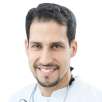Like the flagship event in Las Vegas in the US, Dentsply Sirona (DS) World Madrid 2023 was all about digital dentistry and how greater connectivity allows dentists to simplify treatment and spend more time with their patients. At the show in Spain, Dental Tribune International caught up with Gerard Campbell, group vice president of Dentsply Sirona’s commercial operations in the Europe, Middle East and Africa region. Campbell said that cloud-based solutions like DS Core are fast becoming the norm, streamlining collaboration between dentists and laboratories and rendering burdensome on-site servers at dental clinics obsolete.
Mr Campbell, Dentsply Sirona’s solutions are increasingly digital and ever more integrated with one another. What can you tell us about the company’s strategy in the overarching areas of connectivity and compatibility?
The key thing is DS Core and the way that it connects all the different elements together. DS Core is a system that lives in the cloud and connects all your systems. You can use it to share files and to collaborate with other dentists and with laboratories—it gives you the ability to share all the technology that connects to all your hardware. Right now, software lives mostly on hardware devices; however, with DS Core, the software lives in the cloud. In the past, when you needed a software update, you had to either download it or—going even further back—take a USB stick and plug it in to update the software. Now that the software is in the cloud, you always have the most up-to-date software. We want our customers to always have the best software experience, and I think that it gives customers peace of mind that they are using the most up-to-date solution.
What kind of connectivity does DS Core provide to dentists?
There are multiple uses for DS Core. One of them is sharing and storing files. It is also a place where the software lives and a portal to equipment services, so we can monitor your treatment centre, your CBCT scanner and your intra-oral scanner using the cloud and the core software. Essentially, we can remotely recognise and diagnose problems with equipment. So, there are multiple aspects to this and how it works together, and a big part of it is the collaboration with laboratories. That is a key connection for us because it makes it easy for laboratories to collaborate with dentists.
Many dentists still do not work with cloud storage. When does a tool like DS Core truly become integrated and indispensable in a clinician’s daily dental practice?
Historically, dentists have mainly kept their own data on their own servers in their own dental practices. They must employ IT companies to manage and look after the data and to make sure that it is secure. We know today— particularly when looking at the EU and US data protection regulations—that it is very, very important that we carefully manage patient data security, and we believe that going to a cloud-based system reduces the risk of data losses. It also takes away the hassle of the everyday management of servers, data, security, updates and storage space—which often means adding more local servers in the dental practice!
“In the not-too-distant future, we will look back and think, ‘Why did we keep all of that data on the servers locally?’”
Today, when we go to dental surgeries, we see that data images are becoming more and more enriched. Scans and radiographs have become more accurate and more information-dense. Dentists need more and more storage, and we see them building up greater storage capabilities on their premises. We are saying to dentists, “Don’t think about that—store your data in the cloud instead and the data will be secure and easily accessible from wherever you are.”
I think that this way of storing and sharing data will develop quite rapidly, because we are now familiar with cloud-based storage in our everyday lives. I don’t know about you, but I have 68,000 photographs on iCloud. That is the safest place for me to keep them, and I can share the photos with my family and access and share them from anywhere. We use cloud storage in our everyday lives without thinking about it, and I expect that, as dentistry evolves, the same thing will happen. Sometime, in the not-too-distant future, we will look back and think, “Why did we keep all of that data on the servers locally?”
DS Core Create has caught the interest of dentists. How does it enable them to bypass design software and spend more time with patients?
Not all dentists want to spend time designing the clinical plan and treatment protocol. They want to treat the patient and spend more time with them. With a cloud-based design offering, all they need is an intra-oral scan and/or a CBCT image. Everything starts with that scan, which dentists can send to someone with the skills and knowledge to plan the surgery for them. They come back to the dentist, saying, “Here is the plan that we have developed for you. Do you agree that this is the right treatment plan?” The dentist can then modify or accept the plan, and when the dentist is happy with it, the laboratory can then manufacture the prostheses, the surgical guide and everything that is required for the surgical treatment and send these to the dentist. If we think a little further ahead, in the case of dentists who have their own manufacturing capabilities inside the practice, the laboratory can send the file back to the equipment that is in the practice, and it will automatically manufacture the required products.
What does that mean? It is faster, it has a better carbon footprint, and it means less chair time for the patient. A lot of good things come from this, and I think it is really exciting to think about where this technology is taking us. Looking back, dentists were used to taking analogue impressions, sterilising and bagging these, writing the patient’s name on the package, getting DHL in and sending the impressions to the laboratory, who then may scan the impressions anyway—if you think about all of that, it is just wasted time and effort. We know that our dentists are now looking for efficiency, because the more time they spend with their patients, the better it is for patients, dentists and practices. That is a big factor.
This also relates then to sustainability?
Absolutely. Think about the carbon footprint of what we are talking about here—the materials, the transportation, the plastic bags—all of that disappears. Quite often in the past, laboratories would receive an analogue impression that had gone through the entire process, but was not fit for use—they could not see the margins properly, let’s say. So, they contacted the dentist and said that they would have to get the patient back for another impression. Now, there is a function in DS Core which enables the dentist to chat live with the laboratory when they are doing the scan. Both parties can then agree that everything looks good. This cuts out the issue of having to get the patient back into the practice for another scan or impression. There is a huge amount of efficiency to be gained in this process, and it is not complicated. In the end, it is well-proven technology.
Earlier this year, Dentsply Sirona introduced the OmniTaper EV implant system. How does the EV implant brand offer digital connectivity with DS Core and other parts of the portfolio?
We design our new products with the digital workflow in mind, so the EV family—which includes the EV implant, the OmniTaper implant and the PrimeTaper implant—is designed with a digital workflow in mind and has all the components for a fully digital workflow. These systems also have the same prostheses, which makes it simpler for the dentist to work between the systems. So, dentists have three implant systems which they can use for any type of indication in the mouth, and they all have the same surface finish on them and the same connection, so you have this commonality between the three systems. What we have done is made sure that they are all digitally enabled so that all the catalogues and all the designs are already in our software libraries. When the dentist takes an intra-oral scan and a CBCT scan and goes into the planning software, all the components are there to ensure that the dentist can very easily do a fully digitally planned surgery.
How do digital workflows complement Dentsply Sirona’s dental implant programme in 2023?
I joined Dentsply Sirona 16 years ago, and when we talked about implants at that time, it was about placing an implant in the bone and placing a prosthesis on top of it—the pre- and post-planning were separate. Now, with digital workflows, we are managing the whole process from start to finish. We ask, “How do we start from the scan and proceed all the way to the finished prosthesis?” That is the way that we think about all our processes because, in the end, the dentist is treating a patient with a treatment plan, and it starts with the patient sitting in the chair with a need for care and ends with the patient walking out of the practice with a solution. It is not about narrow segments; it is about connectivity across the whole experience and course of the treatment.
Tags:
MADRID, Spain: DS World Madrid, the two-day Iberian celebration of dentistry, is back for another year, exploring the future of digitalisation, digital ...
CHARLOTTE, N.C., US: As part of its commitment to bringing high-quality clinical education to dental professionals, Dentsply Sirona is expanding its DS ...
CHARLOTTE, N.C., US: To coincide with World Environment Day on 5 June, Dentsply Sirona is offering dental professionals who want to develop a more ...
CHARLOTTE, N.C., US: Dentsply Sirona, the world’s largest manufacturer of professional dental products and technologies, in partnership with Smile Train,...
During IDS 2023, Dental Tribune International talked to Niels Plate, group vice president of digital devices and equipment at Dentsply Sirona, about the ...
Dentsply Sirona made a strong impression at the International Dental Show (IDS) 2023 in Cologne, showcasing its broad portfolio of solutions that ...
Live webinar
Thu. 23 May 2024
12:00 pm EST (New York)
Live webinar
Tue. 28 May 2024
12:00 pm EST (New York)
Live webinar
Wed. 29 May 2024
10:00 am EST (New York)
Live webinar
Tue. 29 October 2024
1:00 pm EST (New York)
Live webinar
Wed. 30 October 2024
11:00 am EST (New York)



 Austria / Österreich
Austria / Österreich
 Bosnia and Herzegovina / Босна и Херцеговина
Bosnia and Herzegovina / Босна и Херцеговина
 Bulgaria / България
Bulgaria / България
 Croatia / Hrvatska
Croatia / Hrvatska
 Czech Republic & Slovakia / Česká republika & Slovensko
Czech Republic & Slovakia / Česká republika & Slovensko
 France / France
France / France
 Germany / Deutschland
Germany / Deutschland
 Greece / ΕΛΛΑΔΑ
Greece / ΕΛΛΑΔΑ
 Italy / Italia
Italy / Italia
 Netherlands / Nederland
Netherlands / Nederland
 Nordic / Nordic
Nordic / Nordic
 Poland / Polska
Poland / Polska
 Portugal / Portugal
Portugal / Portugal
 Romania & Moldova / România & Moldova
Romania & Moldova / România & Moldova
 Slovenia / Slovenija
Slovenia / Slovenija
 Serbia & Montenegro / Србија и Црна Гора
Serbia & Montenegro / Србија и Црна Гора
 Spain / España
Spain / España
 Switzerland / Schweiz
Switzerland / Schweiz
 Turkey / Türkiye
Turkey / Türkiye
 UK & Ireland / UK & Ireland
UK & Ireland / UK & Ireland
 Brazil / Brasil
Brazil / Brasil
 Canada / Canada
Canada / Canada
 Latin America / Latinoamérica
Latin America / Latinoamérica
 USA / USA
USA / USA
 China / 中国
China / 中国
 India / भारत गणराज्य
India / भारत गणराज्य
 Japan / 日本
Japan / 日本
 Pakistan / Pākistān
Pakistan / Pākistān
 Vietnam / Việt Nam
Vietnam / Việt Nam
 ASEAN / ASEAN
ASEAN / ASEAN
 Israel / מְדִינַת יִשְׂרָאֵל
Israel / מְדִינַת יִשְׂרָאֵל
 Algeria, Morocco & Tunisia / الجزائر والمغرب وتونس
Algeria, Morocco & Tunisia / الجزائر والمغرب وتونس
 Middle East / Middle East
Middle East / Middle East
:sharpen(level=0):output(format=jpeg)/up/dt/2024/04/Shutterstock_1017664873.jpg)
:sharpen(level=0):output(format=jpeg)/up/dt/2024/04/Treating-periodontal-disease-reduces-atrial-fibrillation-recurrence.jpg)
:sharpen(level=0):output(format=jpeg)/up/dt/2024/04/3Shape-charts-sustainable-course-with-release-of-comprehensive-sustainability-report-2023.jpg)
:sharpen(level=0):output(format=jpeg)/up/dt/2024/04/Zumax-Medical-Image-1.jpg)
:sharpen(level=0):output(format=jpeg)/up/dt/2024/04/IDEM-2024-Wraps-up-its-13th-edition-with-record-breaking-success.jpg)








:sharpen(level=0):output(format=png)/up/dt/2021/02/logo-gc-int.png)
:sharpen(level=0):output(format=png)/up/dt/2013/01/Amann-Girrbach_Logo_SZ_RGB_neg.png)
:sharpen(level=0):output(format=png)/up/dt/2014/02/A-dec.png)
:sharpen(level=0):output(format=png)/up/dt/2022/06/RS_logo-2024.png)
:sharpen(level=0):output(format=jpeg)/up/dt/2010/02/logo-3DISC-et-baseline-fond-blanc.jpg)
:sharpen(level=0):output(format=png)/up/dt/2014/02/EMS.png)
:sharpen(level=0):output(format=png)/up/dt/2013/04/Dentsply-Sirona.png)
:sharpen(level=0):output(format=jpeg)/up/dt/2023/10/It-is-about-connectivity-across-the-whole-experience.jpg)
:sharpen(level=0):output(format=jpeg)/up/dt/2022/03/DSCF6298DTI-300x300.jpg)
:sharpen(level=0):output(format=jpeg)/up/dt/2023/10/It-is-about-connectivity-across-the-whole-experience-1.jpg)
:sharpen(level=0):output(format=jpeg)/up/dt/2023/09/Action-packed-first-day-at-DS-World-Madrid-2023-2.jpg)
:sharpen(level=0):output(format=jpeg)/up/dt/2023/09/Dentsply-Sirona-launches-new-DS-Academy-Campus-with-focus-on-digital-implant-and-aligner-therapy.jpg)
:sharpen(level=0):output(format=jpeg)/up/dt/2023/06/Shutterstock_1959278563.jpg)
:sharpen(level=0):output(format=jpeg)/up/dt/2023/05/Dentsply-Sirona-FDI-and-Smile-Train-deliver-first-ever-global-protocols-for-digital-cleft-treatment.jpg)
:sharpen(level=0):output(format=jpeg)/up/dt/2023/04/Digital-workflow-for-dental-offices-and-laboratories_Niels-Plate_Dentsply-Sirona.jpg)
:sharpen(level=0):output(format=jpeg)/up/dt/2023/04/An-implant-solution-for-virtually-every-indication_1.jpg)






:sharpen(level=0):output(format=jpeg)/up/dt/2024/04/Webinar-to-focus-on-peri-implant-tissue-augmentation-and-maintenance.jpg)
:sharpen(level=0):output(format=jpeg)/up/dt/2024/04/DS-Academy-launches-Indirect-Restorative-Course-Series.jpg)
:sharpen(level=0):output(format=jpeg)/up/dt/2024/03/X-Smart-Pro-Ensuring-safety-while-going-much-faster-1.jpg)
:sharpen(level=0):output(format=jpeg)/wp-content/themes/dt/images/3dprinting-banner.jpg)
:sharpen(level=0):output(format=jpeg)/wp-content/themes/dt/images/aligners-banner.jpg)
:sharpen(level=0):output(format=jpeg)/wp-content/themes/dt/images/covid-banner.jpg)
:sharpen(level=0):output(format=jpeg)/wp-content/themes/dt/images/roots-banner-2024.jpg)
To post a reply please login or register